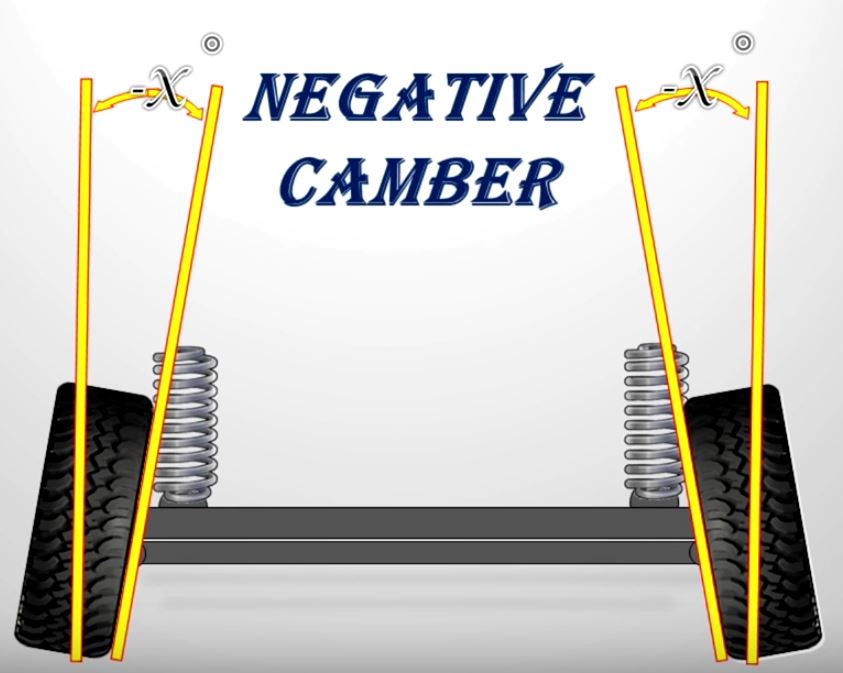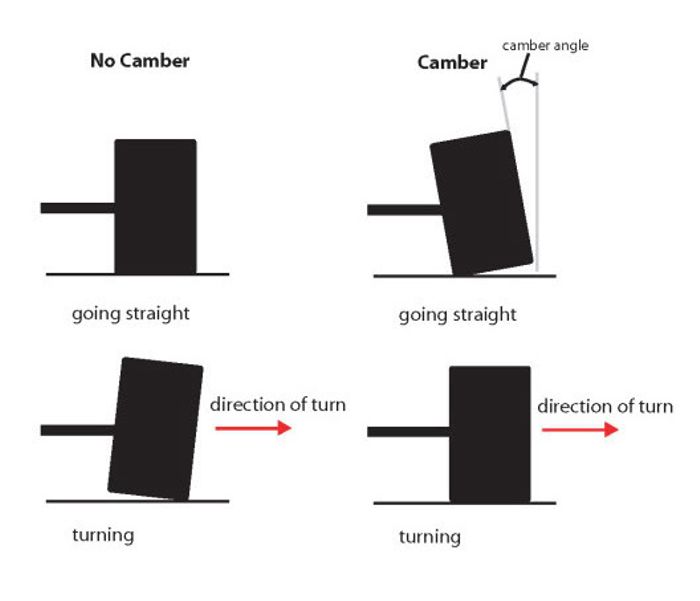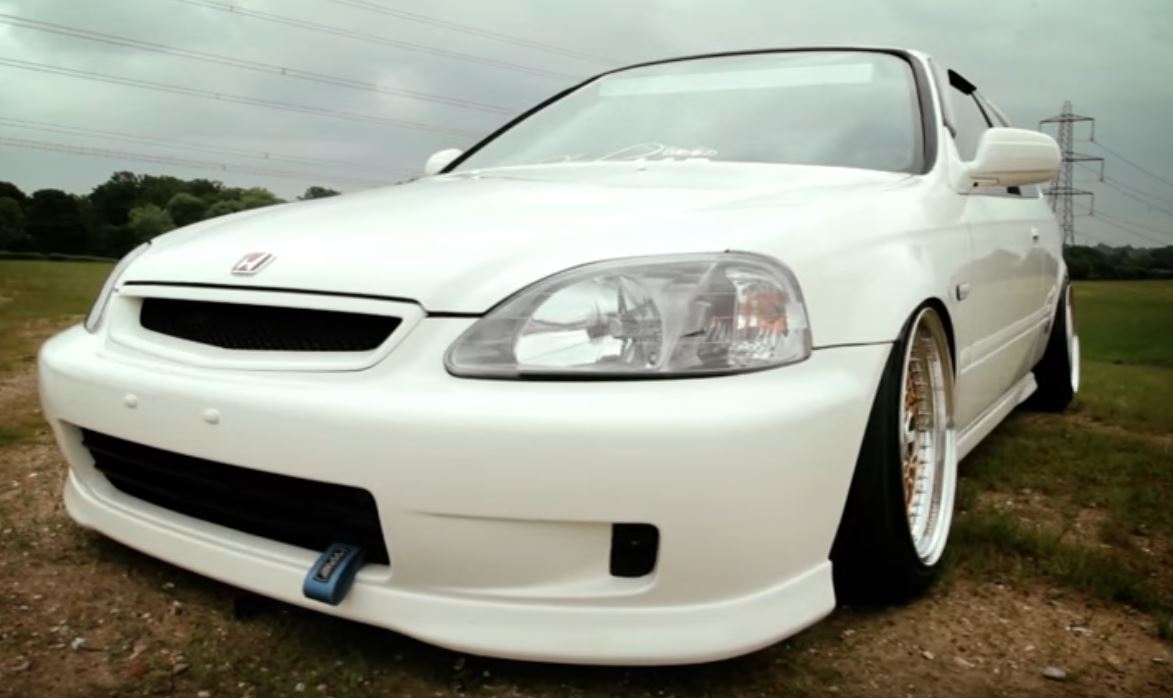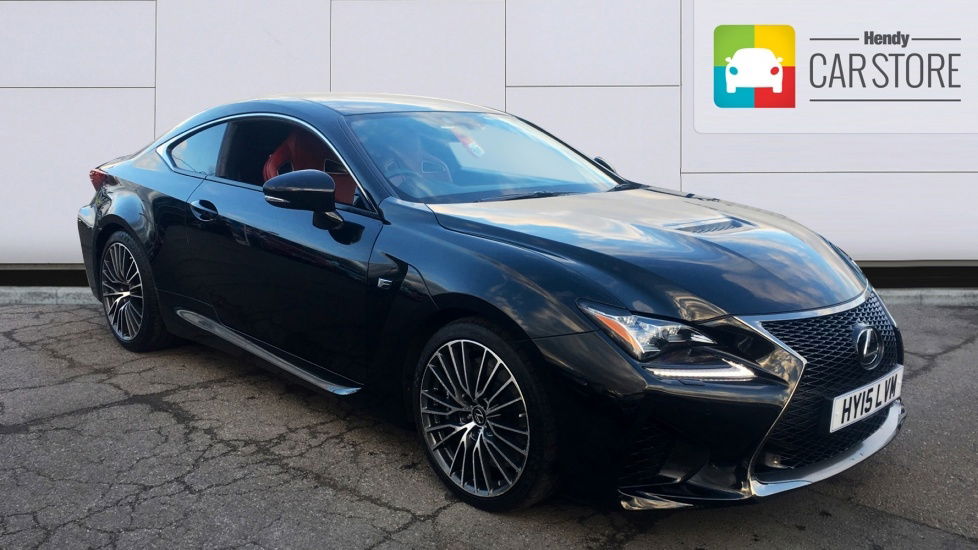The Ins And Outs Of Camber

Car setup can be as crucial as any engine modification when it comes to performance driving, and one of the leading factors that influences the way a car handles is its camber settings.
Also known as ‘stance’ when taken to extremes, camber rotates a wheel about its vertical axis – the top either angling away from or towards the centre vertical axis of the car. With this often been pushed to the limit by a certain ilk of car modifier, let’s take a look at the two forms of camber and how they can influence a car’s dynamics.
Positive camber

Some vehicles use positive camber - with the top of the wheel angling outwards - due to steering axis inclination. This inclination is between the ends of the steering control arms, with the axis being governed by the kingpin between the two. The axis of the steering system, if left vertical and in plane with the tyre, results in a large scrub radius for the tyre to rotate through. The scrub radius is the path along which the tyre has to travel along the ground to complete its steering arc. This scrubbing vastly increases tyre wear and input effort, and therefore the steering axis is inclined to minimise the size of the scrub radius.
To coincide with this inclination, the wheel itself is set at a slightly positive camber to allow the tyre to rotate through steering inputs more easily. Due to the angle between the two control arms connected by the kingpin, the wheel naturally wants to follow the path of least resistance once it has turned. As the steering axis is inclined, the wheel naturally wants to return to its original straight position which is the reason why your steering will self-centre after a steering input.
Second World War fighter aircraft like Spitfires would often feature positive camber as well. This was because they would often take off from and land on unpaved airfields, so the landing gear needed a tyre setup that would deflect these rough surfaces and keep the plane moving straight along the runway.
Negative camber

In moderation, negative camber (the top of the tyre angling inwards) should improve the handling of your car through additional lateral grip. As a car travels around a corner, the tyre wants to roll inwards towards the wheel arch. This is because the sidewalls tend to flex, causing the inner portion of the tyre to lift upwards.
In a setup with neutral camber, this will mean the contact patch with the road is decreased as the tyre rolls up on itself. If you are running neutral camber and drive your car especially hard, you may notice that the outer portion of your tyre suffers from heavy wear compared to the inner portion, as the latter frequently gets lifted out of the contact zone with the road. This effect is worsened by a car that is softly sprung, with the weight of the vehicle causing it to roll further, lifting the inside of the tyre even more.

With negative camber, the contact patch can be maximised during cornering, allowing the tyre to lie flush with the road surface which makes for an increase in grip and potential cornering speed. This is because it places the tyre at a better angle to the road, transmitting the forces through the vertical plane of the tyre rather than as a shear force across it.
A daily driver who may deem himself an exuberant motorist should have settings of around -1.5 degrees at the front and -1 degree at the rear (seeing as it doesn’t have to deal with the same steering load). A project car/hot hatch owner that will sometimes track their car is looking at more like -2.5 degrees and -1.5 degrees respectively, with full-on drift cars creeping up to -4 degrees at the front and -2 degrees at the rear.
These figures will vary depending on suspension setup and spring stiffness. Negative camber can be combined with a stiffly-sprung suspension setup to maximise the interaction between the tyre tread and the road. As long as the road is smooth enough.

Cars with multi-link suspension gain camber as suspension travel increases. These suspension setups are engineered to have a faster rate of negative camber gain under roll compared with the simple MacPherson strut. This is a reason why cars with this sort of suspension typically handle better, making it perfect for sports or performance cars.
However, if negative camber is pushed beyond the realms of suitable performance for aesthetic reasons, bad things happen. Traction for braking and acceleration will decrease due to the smaller contact patch while the wheels are straight. Cars with negative camber will also tend to tramline and wander by following cambers and grooves in the road surface, which reduces high speed stability. And unless you’re cornering hard constantly, wear on the inside of the tyre will be huge.
As with many car mods, camber can be used to great effect in moderation but in general it is best to keep with the manufacturer’s guidelines. Adjustable control arms can allow for the fine-tuning of a car’s setup, whether it be for brisk road driving or regular track days, but proper alignment analysis should be undertaken before changing any geometry. I have personally never dabbled with camber but if I somehow manage to raise some funds for a Ford Puma track car, it would definitely be something to look into!
Have you altered the camber settings on your car? What’s your view on the stance community? Comment with your thoughts and experiences below!

Comments
Stance can sometimes look nice, but it negatively affects performance in every way! Moderation is the key - that applies to almost everything.
“Most standard vehicles use positive camber”.
No. No they don’t.
Positive Camber: YAY ANOTHER HAPPY DAY BEING CAMBER
Negative Camber: ugh, another boring day, y was i born as camber
All you need to know is it looks bad.(haters gonna hate)
Seeing those stanced ricers makes me puke.
Those poor CV joints on the last car in the video…
You should also do articles about caster and toe too
i beg to differ with your information on drift car camber, front yes, in excess of -4 degrees… but rear, drivers typically run a little positive camber. this is because as the rear suspension is compressed from WOT moments during drifting the tires will then lay close to flat or go a little negative maximising their grip through complete tire contact. Look up other drivers running the formula drift circuit and you’ll positive and neutral camber in the rear.
When ricers try to find justification for ruinning cars
stanceallsubies read this
Pagination